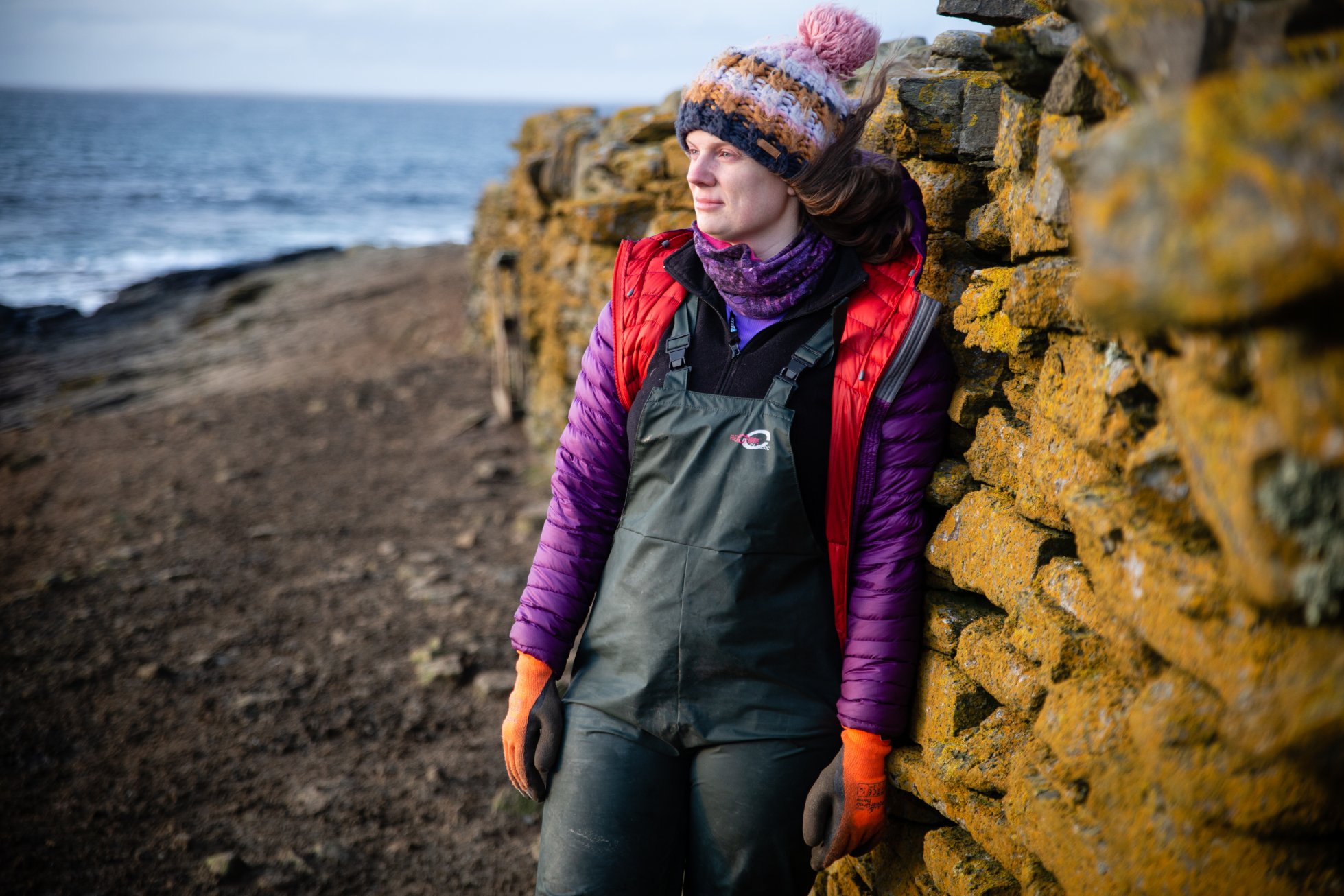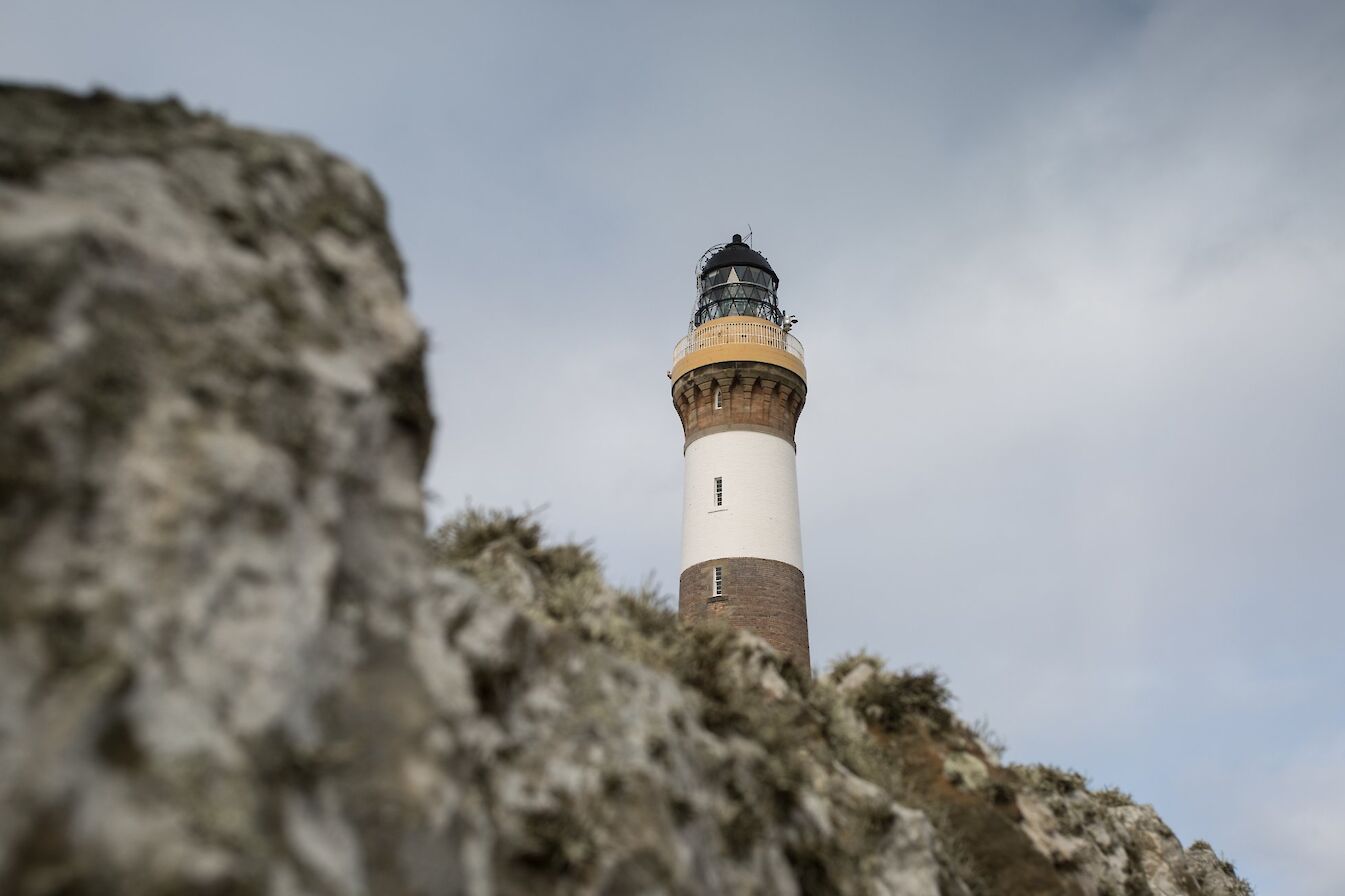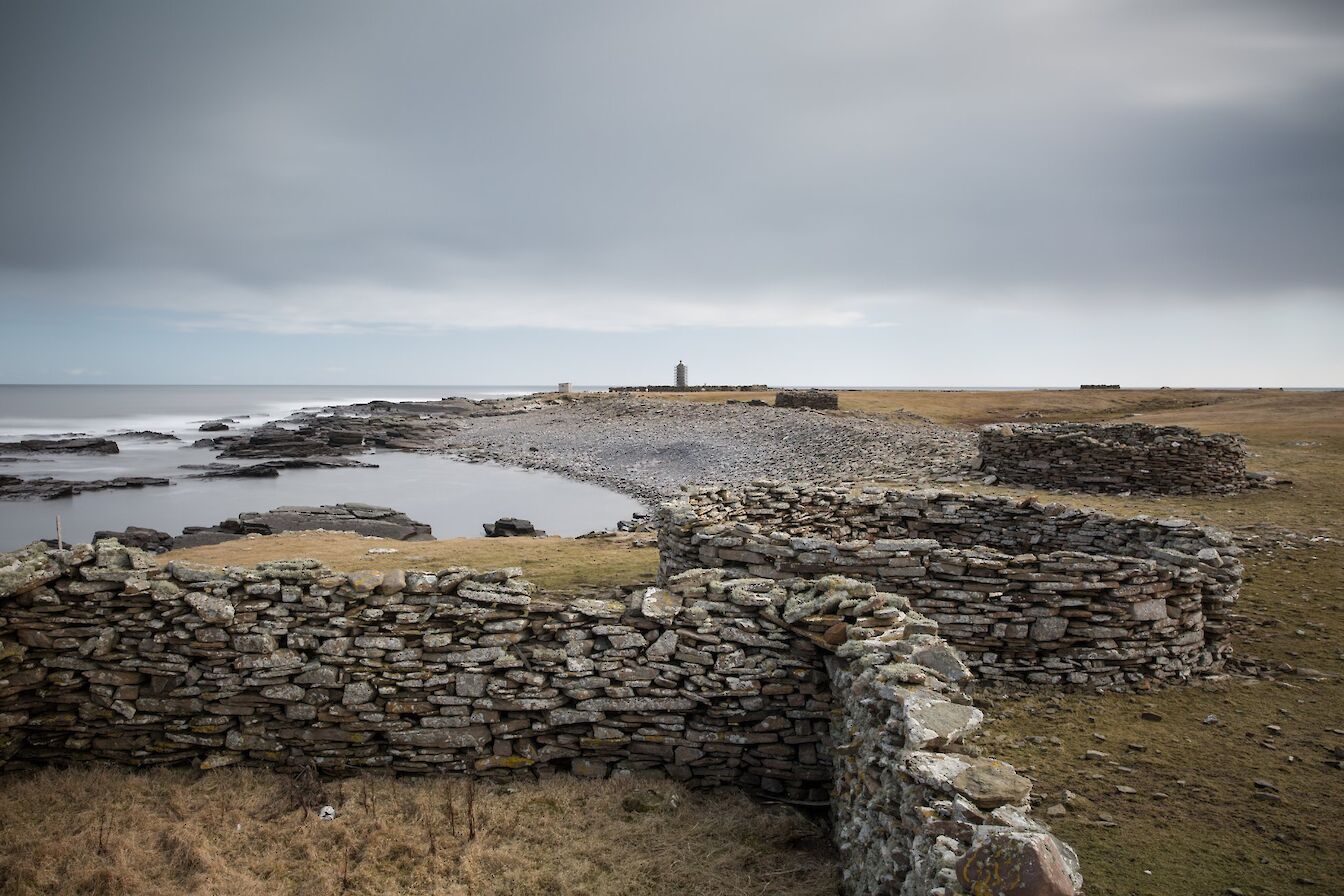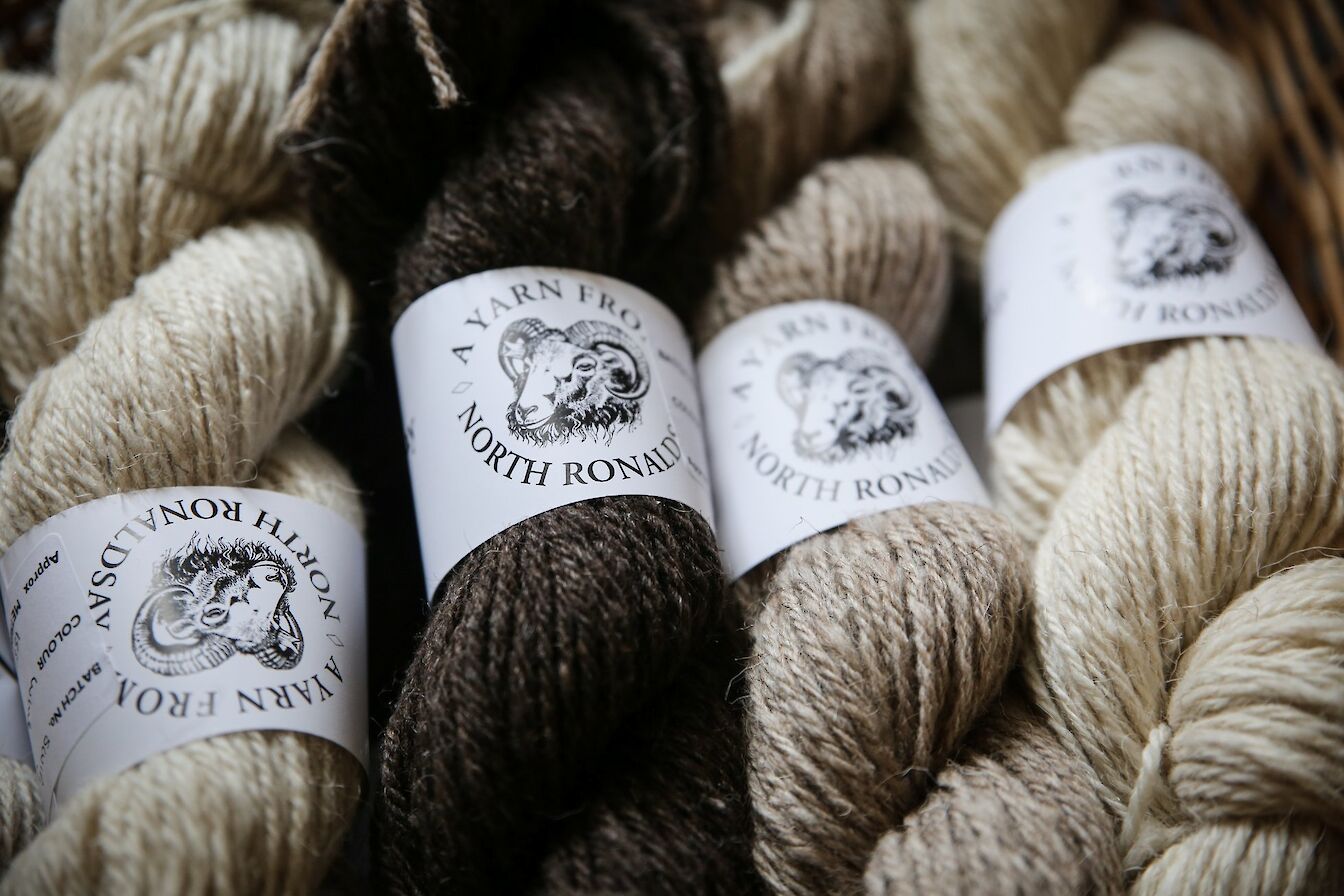In the doorway to Siân Tarrant’s new home in North Ronaldsay rests an elegant, handmade shepherd’s crook. It's a leaving gift from her former colleagues at the National Trust in North Devon, and a fitting emblem for her new life in Orkney’s most northerly community.
28-year-old Siân has just taken up one of the more unusual jobs in Orkney, with responsibility for North Ronaldsay’s Grade A listed Sheep Dyke. It encircles the island, and keeps a unique breed of seaweed-eating sheep on the shoreline and away from precious grazing. The sheep are vital to the economy of North Ronaldsay. The wool is processed by a special mill housed in the island’s lighthouse buildings, while the mutton is much-prized by leading chefs.
But the sheep are also central to the island’s identity – a communal resource requiring skilful management and husbandry. North Ronaldsay’s full-time population now sits at around the 50 mark, and there simply aren’t enough young, fit people within the community to maintain the dyke, hence the post of Sheep Dyke Warden was created this year by the North Ronaldsay Trust, with funding from the North Isles Landscape Partnership Scheme and the National Lottery Heritage Fund.
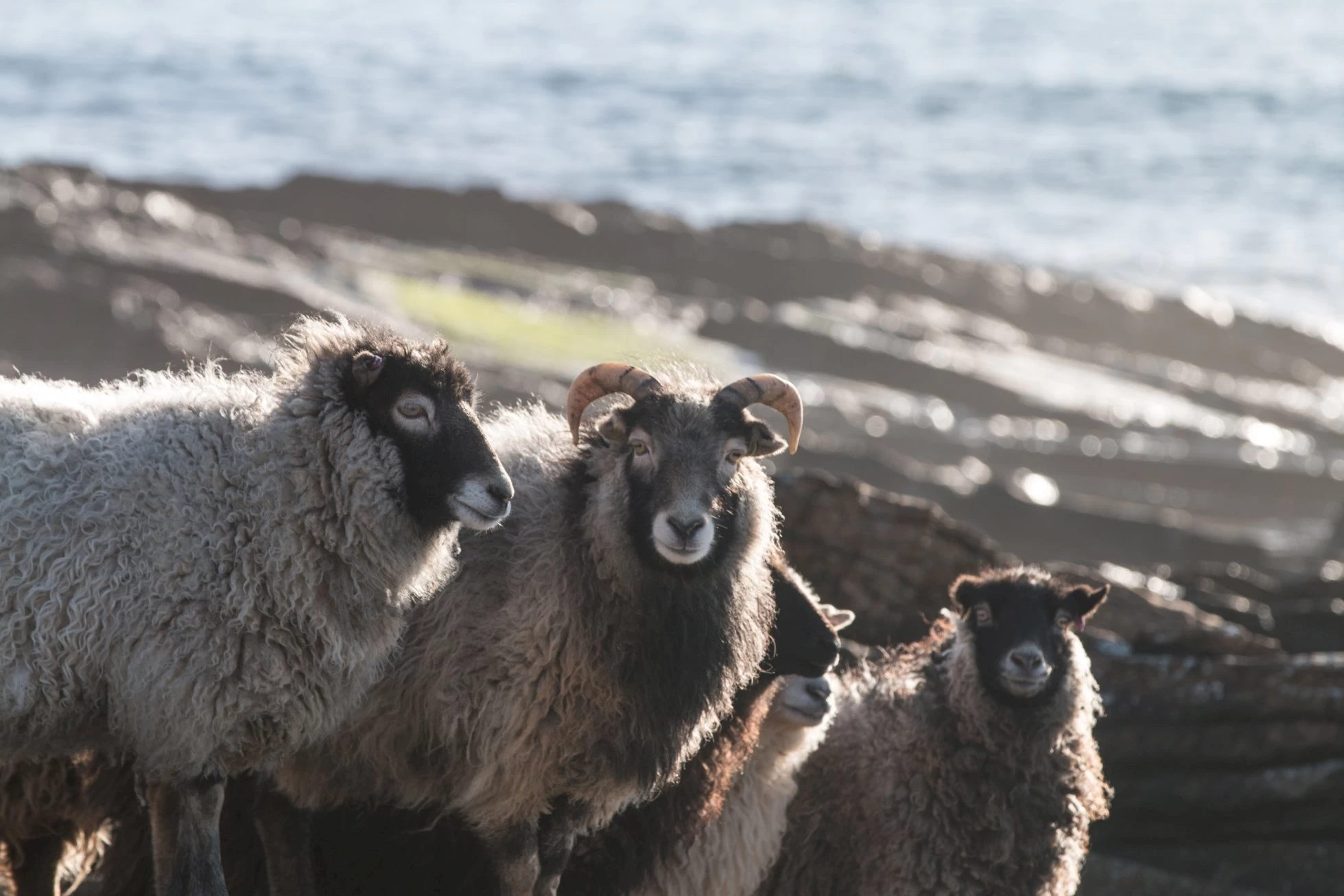
‘’It’s important to me to help preserve the heritage of the island and the dyke,’’ says Siân. ‘’Not just the physical structure, but the activities and customs connected to it.’’
There’s a fresh south easterly wind blowing as Siân works on a section of the dyke close to the island’s pier. It’s a skilful art, the round-edged beach stones being notoriously difficult to build with, while gaps have to be left between the stones to allow the water to pass through – a trick learnt through generations - which minimises damage from surging storm seas. Sian looks very much at home here, placing stone upon stone.
‘’I studied Marine Biology at the University of St Andrews, and after graduating in 2013 I worked with the Sea Mammal Research Unit around the Scottish coastline. I worked in places like the Outer Hebrides, the Isle of May, Islay, and Skye, as well as the uninhabited North Rona, and quickly fell in love with island life.”
And, as if that wasn’t quite remote enough, Siân then went on to work with the British Antarctic Survey, spending 16 months on a small island near South Georgia. ‘’I was mainly working with seals and helping the other assistants with penguins and seabirds, and then spending the winter in a team of four,” said Siân.
“Then I spent field seasons in Scotland and Chile, studying seals, before moving to Devon to volunteer with the National Trust,” she said. “That was the first time I experienced dry stone walling and working with the tenant farmers.”
Siân spotted the advert for the new post through the Countryside Jobs Service. She says she was keen to return to Scotland and get back to that island life.
‘’I was just really excited by the opportunity,” she remembers. “It was such a unique job, to be able to help preserve North Ronaldsay’s dyke and work with the famous seaweed-eating sheep. I really enjoy working outdoors and that was a big draw for me too.”
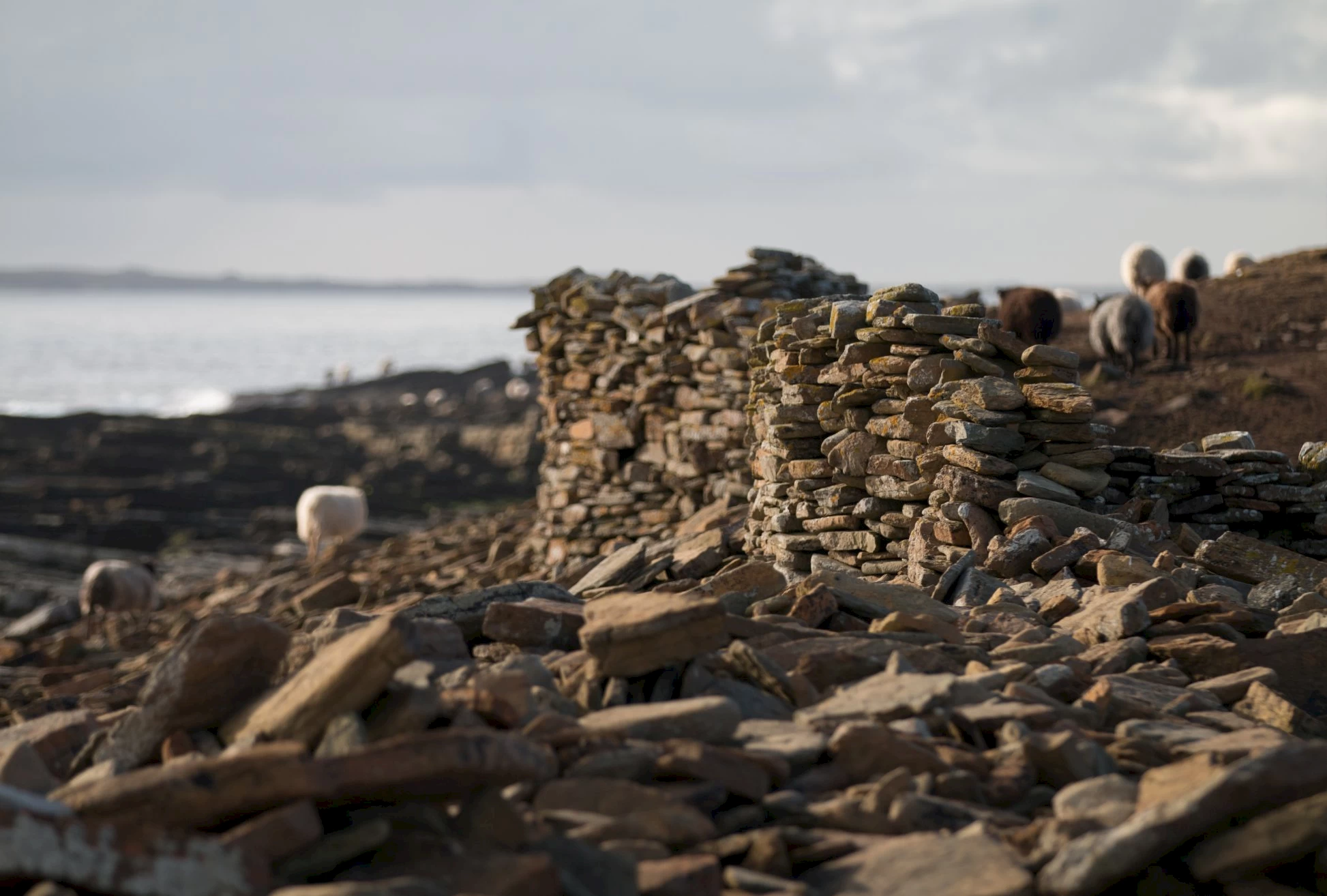
Along with her partner Olly she’s moved into the island’s former schoolhouse, recently renovated by the North Ronaldsay Trust as part of an ambitious initiative to provide more affordable, energy-efficient housing in the island.
‘’It’s very spacious and comfortable,” says Siân. “Olly has been busy collecting driftwood to burn in the stove and we’ve been making the most of the large kitchen by baking a lot, making our own bread, homemade pizza and pasta. We’re using one of the spare bedrooms as a space for yoga, and the other as an office, though we hope family and friends will visit too.’’
Siân paints an attractive picture of domestic life, one which hints at a combination of self-reliance and sociability that should stand the pair in good stead for living here.
Every year volunteers come to North Ronaldsay to help rebuild storm-damaged sections of the dyke during the island’s annual Sheep Festival. They arrive from around the world, giving up their time to help this small community. Working hard throughout the day, dancing and socialising in the evenings. It’s a spirit of reciprocal benevolence that Siân is keen to encourage.
‘’The volunteer effort during the sheep festivals has been amazing and I’d really like to develop the volunteer offer throughout the year. It’d be great to have working holidays on the dyke, maybe with ‘experience workshops’ like seaweed foraging or natural dyeing,” she said.
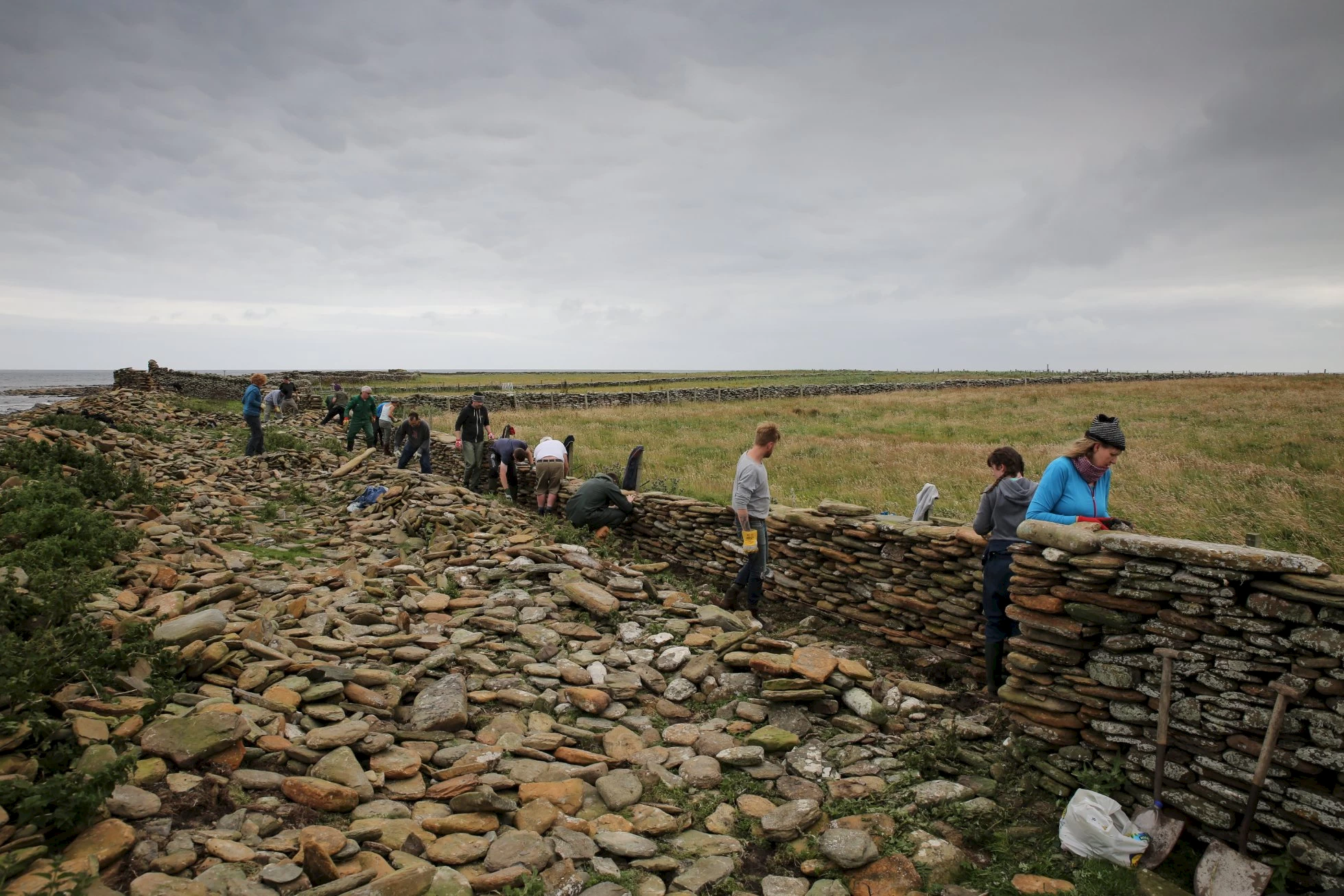
The task at hand appears Herculean. The entire dyke is over 12 miles long and several miles of it have been effectively flattened in recent storms – a problem which is only likely to be compounded in the years to come by the effects of climate change. Sian has a relatively realistic approach, though.
‘’The amount of dyke in an unfavourable state is quite daunting, but there’s such a long history linking the islanders with the dyke, I just hope I can continue the labour of love that they have had with it.”
While the work of volunteers will be crucial to the survival of the sheep dyke, much of Sian’s time will be spent in isolation – splendid or otherwise – on this island shore. There’s nothing to stop the force of winter gales thundering east across the Atlantic from Newfoundland, or west from the coast of Norway. Nothing but the dyke itself, as little-by-little it rises. But this isn’t a prospect that unduly concerns this new islander.
‘’During the winter in the sub-Antarctic there were only four of us at the station and I would work on my own daily, either outside trying to spot leopard seals or in the lab processing seal scats. I do enjoy having time to myself and working outside in nature, especially in a coastal environment like this,” she said.
“There are plenty of seals and fulmars around, and I’ll never get tired of the energy from the wind and the waves.’’
The Digital Orkney project has been part financed by the Scottish Government and the European Community Orkney LEADER 2014-2020
